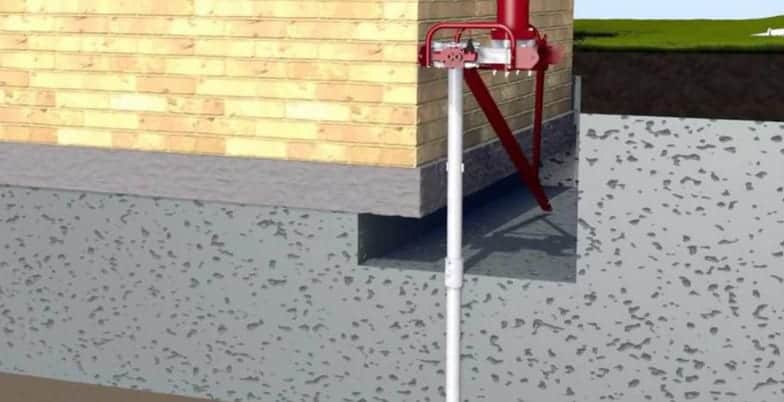Underpinning and Shoring in Building Construction
Underpinning, scaffolding, and shoring are construction methods used in supporting and strengthening a building. Here are the definitions of these construction methods.

What Does Shoring Mean?
Shoring refers to a construction process that involves supporting a weak or unstable building to prevent it from collapsing to allow construction work to proceed safely.
Shores, the noun of the phrase shoring, is used to describe the materials that are used during the shoring process.
Applications of Shoring
Shoring is typically used to give floors and beams support in a structure whose wall or column is being removed. The supports work as temporary replacements for the removed walls or columns. Shoring systems are also used to offer safety to workers when working in a deep trench.
It’s worth noting that shoring is not the same as shielding. Basically, shoring is used to prevent a building from collapsing whereas shielding is applied to protect construction workers in the event of a collapse.
Concrete shores, also known as falsework, offer temporary support to the structure until the poured concrete is hard and strong enough to support a load.
Shoring Techniques Used In Construction
There are several techniques used in the construction of a building including:
-
Hydraulic Shoring
Typically, hydraulic shoring involves using hydraulic pistons to press against the walls of a trench by pumping them outward.
The hydraulic pistons are often used in combination with plywood or steel plate. In this case, the plywood used is 1 1/8 inches thick or heavy-duty Finland Form with a thickness of 7/8 inches.
-
Raking Shore
In this method, one or several timbers are placed in a sloped angle between the ground and a structure’s face.
Sufficient support is attained once the timbers meet the wall of the building at an inclination of 60-70 degrees. The area being supported is increased by using a sturdy wall-plate.
-
Beam and Plates
Steel beams are usually driven into a stable ground with steel plates slid between them. Another similar technique, known as soldier boarding, uses wooden planks.
Hydraulics are usually faster and simpler to use. Other methods are ideal for larger excavations or long term applications.
-
Continuous Flight Augering
Abbreviated as CFA, this method is used in creating concrete piles for supporting soil to allow for safe excavation nearby. A CFA drill works by excavating a hole.
Concrete is then injected under pressure through a shaft while extracting the auger. That way, a continuous concrete pile is created without leaving any open hole.
-
Soil Nailing
In this technique, retaining walls, excavations, or soil slopes are strengthened by inserting slender elements, typically steel bars. The reinforcing bars are installed in pre-drilled holes and grouted in place.
They can also be installed by drilling and grouting simultaneously. They’re usually installed without tension at a little downward inclination.
In some cases, a flexing or rigid facing or soil nailing may be applied on the surface for further reinforcement.
What Does Underpinning Mean?
Underpinning is a construction technique used to strengthen and stabilize a weakened foundation of a building or any other structure, according to Global Reblocking – experts in underpinning Melbourne houses.
Applications of Underpinning in the Construction of a Building
Underpinning can be applied based on several reasons including:
- Changes in how a building is used
- The existing foundation is no longer stable or strong enough as a result of decayed timber piles below the foundation
- Construction of a nearby building requires excavation of the soil supporting an existing foundation
- It’s more affordable, due to low price of the land or other reasons, to renovate an existing foundation rather than building a brand new one
- The soil on which a foundation sits has subsidized or there was a mischaracterization of soil properties during the initial planning
The process of underpinning is applied by extending a foundation in breadth or depth such that its weight is distributed across a wider area or it sits on a more stable soil stratum. Jet grouting and micro-piles are some of the most commonly used underpinning methods.
An alternative method to underpinning technique is using grout to strengthen the soil on which a foundation sits. These construction processes are often elaborate and expensive.
What Does Scaffolding Mean?
Scaffolding can be described as a temporary framework to support workers when repairing or constructing a building or any other large structure. It’s also used to refer to the materials used in scaffolding.


